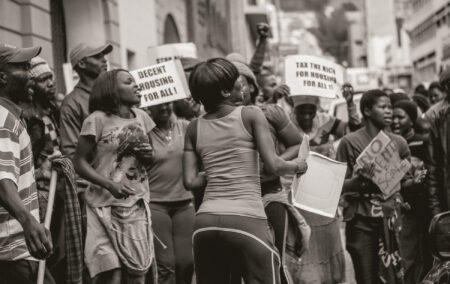The total number of crowd-related incidents in South Africa has dropped steadily since 2014/15, but protests have become increasingly violent.
According to the latest statistics on crime from the South African Police Service (SAPS), the number of crowd-related incidents declined from 14 740 to 14 599 between 2014/15 and 2018/19, with the number of peaceful incidents declining from 12 451 to 10 322, or by 20,6%.
But violent demonstrations – including service delivery
protests, industrial action, and conflict between factions within political
parties – have climbed by 87%, from
2 289 in 2014/15 to 4 277 in 2018/19. Events classified as
‘unrest-related’ have grown as a proportion of total protests from 15,5% in
2014/15 to 29,3% in 2018/19.
IRR analysts say the rise in violent protests reflects, among other things,
mounting desperation at the consequences of low economic growth and low job
creation, and political alienation as confidence in political leaders is
declining. They say fewer people are voting in elections. The analysts argue
that, as service delivery continues to deteriorate in many municipalities
across the country, more and more people believe that voting is not enough to
win the attention of the government or local authorities.
In contrast, violent protests are guaranteed to gain media
coverage, while the disruption of services compels officials to acknowledge
grievances.
Pointing to massed protests elsewhere in the world, such as Hong Kong, Chile,
Ecuador, Lebanon and Iraq, the IRR notes that South Africa already has a number
of factors in common with these countries, including rampant corruption, high
youth unemployment, political interference in individual rights, and burdensome
taxes.

